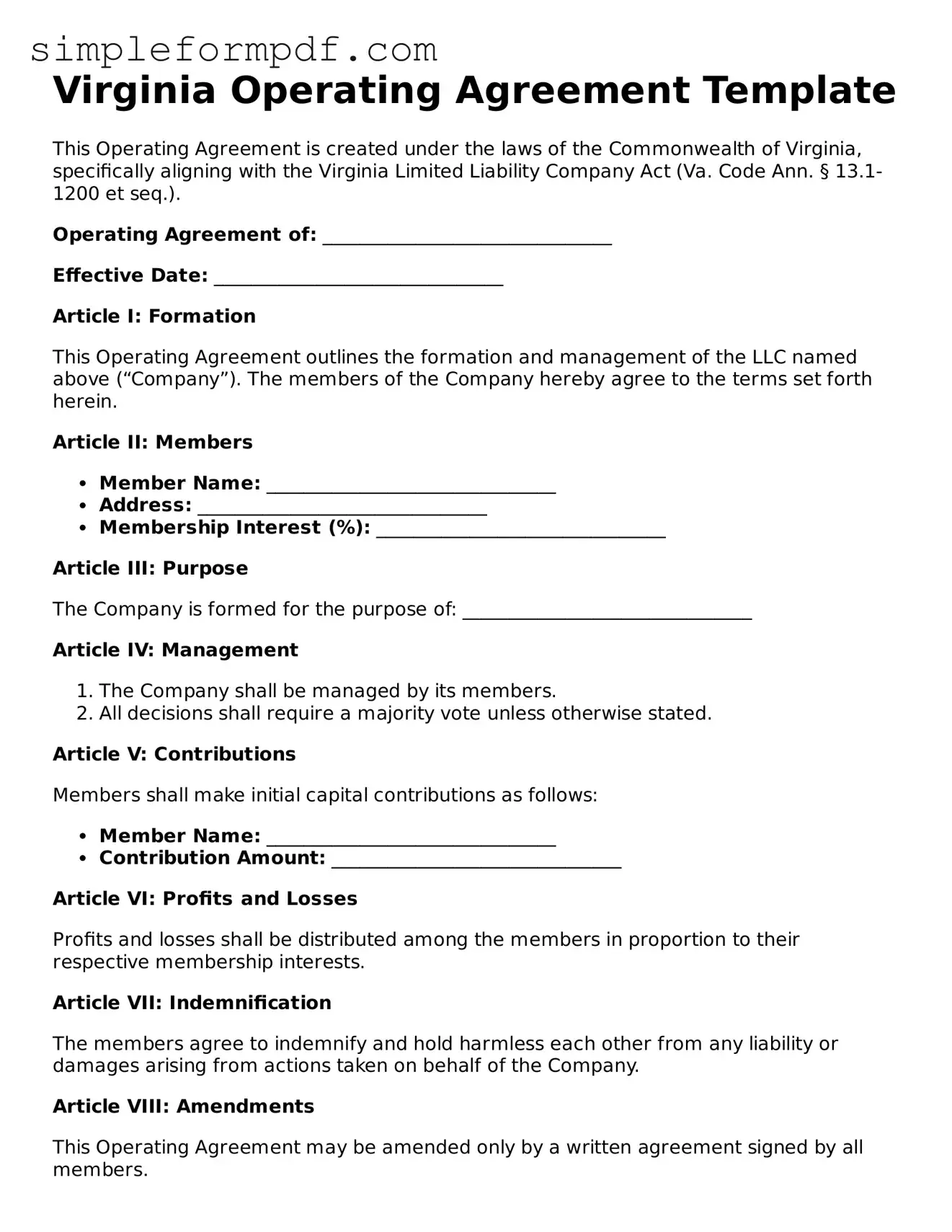Virginia Operating Agreement Template
This Operating Agreement is created under the laws of the Commonwealth of Virginia, specifically aligning with the Virginia Limited Liability Company Act (Va. Code Ann. § 13.1-1200 et seq.).
Operating Agreement of: _______________________________
Effective Date: _______________________________
Article I: Formation
This Operating Agreement outlines the formation and management of the LLC named above (“Company”). The members of the Company hereby agree to the terms set forth herein.
Article II: Members
- Member Name: _______________________________
- Address: _______________________________
- Membership Interest (%): _______________________________
Article III: Purpose
The Company is formed for the purpose of: _______________________________
Article IV: Management
- The Company shall be managed by its members.
- All decisions shall require a majority vote unless otherwise stated.
Article V: Contributions
Members shall make initial capital contributions as follows:
- Member Name: _______________________________
- Contribution Amount: _______________________________
Article VI: Profits and Losses
Profits and losses shall be distributed among the members in proportion to their respective membership interests.
Article VII: Indemnification
The members agree to indemnify and hold harmless each other from any liability or damages arising from actions taken on behalf of the Company.
Article VIII: Amendments
This Operating Agreement may be amended only by a written agreement signed by all members.
IN WITNESS WHEREOF, the undersigned have executed this Operating Agreement as of the Effective Date.
Member Signature: _______________________________
Member Name: _______________________________
Date: _______________________________
